
A cherry is the fruit of many plants of the genus Prunus, and is a fleshy drupe.

Prunus serrulata or Japanese cherry is a species of cherry tree that grows naturally in Japan, China, Korea, Vietnam, Taiwan, Laos, Myanmar, Thailand, Cambodia, India, Bangladesh, Bhutan, Nepal, Sri Lanka, Pakistan, Philippines, Malaysia, Indonesia, Brunei, Mongolia, Siberia, Papua New Guinea and into the Cape York Peninsula in north Queensland (Australia). The term also refers to a cultivar produced from Prunus speciosa, a cherry tree endemic in Japan. Historically, the Japanese have developed many cultivars by selective breeding of cherry trees, which are produced by the complicated crossing of several wild species, and they are used for ornamental purposes all over the world. Of these, the cultivars produced by complex interspecific hybrids based on the Oshima cherry are also known as the Cerasus Sato-zakura Group.

Prunus × yedoensis is a hybrid cherry tree between Prunus speciosa as father plant and Prunus pendula f. ascendens as mother. It is a hybrid born in Japan and one of its cultivars, Prunus × yedoensis 'Somei-yoshino' or Yoshino cherry, is one of the most popular and widely planted cherry cultivars in temperate regions around the world today. 'Somei-yoshino' is a clone from a single tree, and has been propagated by grafting all over the world. 'Somei-yoshino' inherits Edo higan's quality of blooming before the leaves unfold and it growing into a large-sized tree. It also inherits the characteristics of the Oshima cherry, which grows rapidly and has white flowers. These characteristics are favored and have become one of the most popular cultivars of cherry trees.

Prunus lusitanica, the Portuguese laurel cherry or Portugal laurel, is a species of flowering plant in the rose family Rosaceae, native to the Iberian Peninsula, Morocco, the Macaronesian archipelagos, and the French Basque Country.
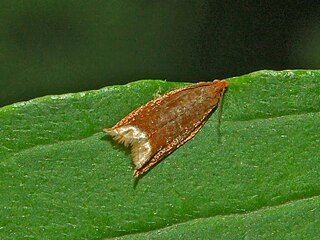
Ancylis selenana is a moth of the family Tortricidae. It is found from southern Sweden and Finland to France and Italy and to the Balkan Peninsula. Outside of Europe, it is found from Asia Minor to southern Siberia and Korea.
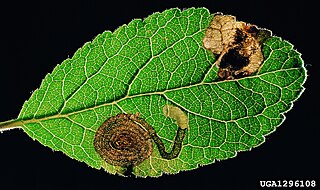
Stigmella prunetorum is a moth of the family Nepticulidae. It is found in all of Europe.
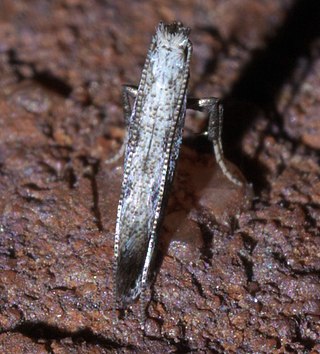
Parornix is a genus of moths in the family Gracillariidae. The genus was raised by the German entomologist Arnold Spuler in 1910.

Parornix devoniella is a moth of the family Gracillariidae found in Europe. The larvae are leaf miners, feeding on the tissue inside the leaves of hazels Corylus species.
Parornix atripalpella is a moth of the family Gracillariidae. It is known from France, Germany, mainland Italy, Sardinia, Poland, Sweden and Switzerland.
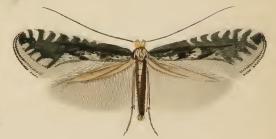
Parornix petiolella is a moth of the family Gracillariidae. It is known from Austria, Bulgaria, the Czech Republic, France, Germany, Hungary, Italy, Kazakhstan, Luxembourg, Moldova, Poland, Romania, the European part of Russia, Slovakia, Switzerland and Ukraine.
Parornix szocsi is a moth of the family Gracillariidae. It is known from Austria, the Czech Republic, Hungary, Sardinia, Kazakhstan, Romania, the European part of Russia, Slovakia, Spain, Tajikistan and Ukraine.
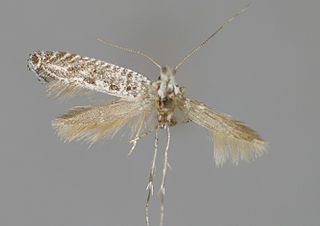
Parornix anguliferella is a moth of the family Gracillariidae. It is found from Germany to Sardinia, Sicily and Greece and from the Netherlands to southern Russia.
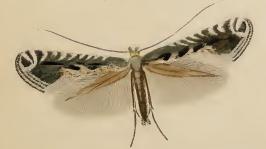
Parornix torquillella is a moth of the family Gracillariidae found in Europe. The larvae mine the leaves of Prunus species, such as blackthorn. It was described by the German entomologist Philipp Christoph Zeller in 1850, from specimens found in Florence, Leghorn and Pisa.
Parornix multimaculata is a moth of the family Gracillariidae. It is known from the Japan (Hokkaidō), Korea and the Russian Far East.
Parornix preciosella is a moth of the family Gracillariidae. It is known from Québec, Canada, and Connecticut, Pennsylvania and Vermont in the United States.
Parornix crataegifoliella is a moth of the family Gracillariidae. It is known from Canada the United States.
Parornix quadripunctella is a moth of the family Gracillariidae. It is known from Québec, Canada, and Georgia, Kansas, Kentucky, Maine, Maryland, Vermont and Pennsylvania in the United States.
Parornix geminatella, the unspotted tentiform leafminer moth, is a moth of the family Gracillariidae. It is known from Québec, Canada, and Florida, Georgia, Maine, Maryland, New York, Vermont, Texas, Colorado, Missouri, Kentucky and Connecticut in the United States.
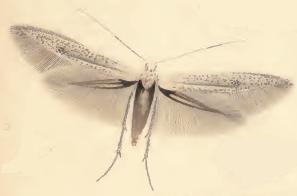
Coleophora hemerobiella, the fruit tree case moth is a moth of the family Coleophoridae, found in western Europe.

Prunus scoparia is a wild almond primarily found in the Zagros forests of Iran but also distributed across Turkey, Turkmenistan, and Afghanistan. It is a xerophytic shrub and it has been used as a grafting stock for domesticated almonds to provide drought resistance.










